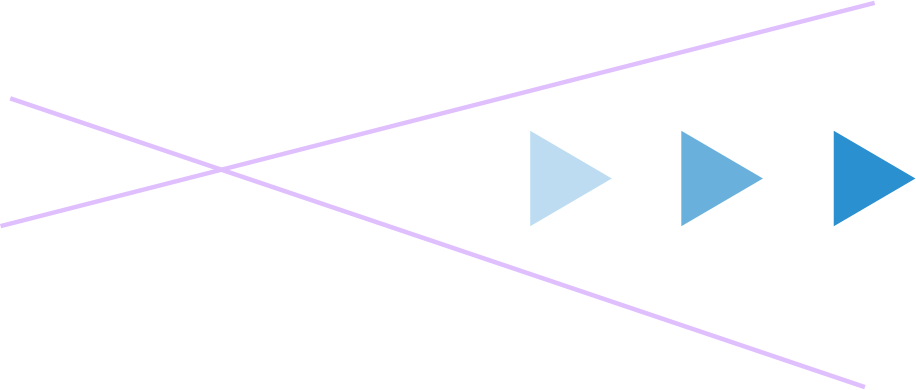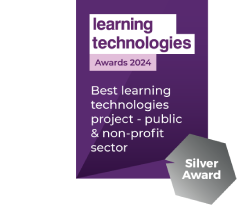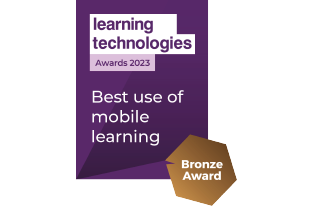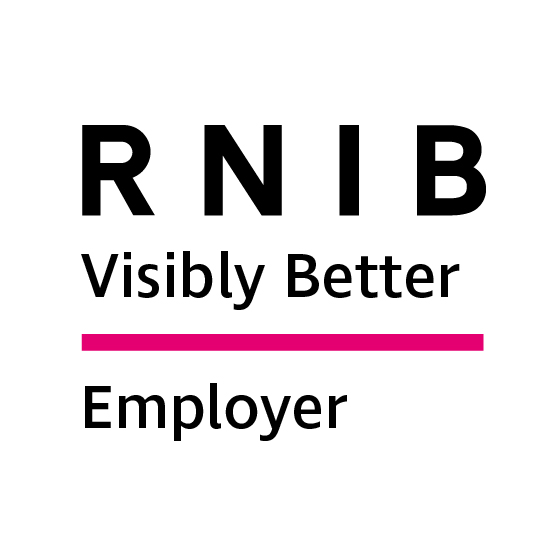Home / Thinking Zone / Exploring the boundaries of reality within Virtual Reality
Exploring the boundaries of reality within Virtual Reality
I think therefore I am. [1]
The nature of reality is one of the biggest questions which philosophers have explored for centuries, and one which continues to perplex and inspire.
How do we understand reality? Is it through the physical? The sensory? Or is reality just our own individual perception? How do we know for sure that we aren’t part of a bigger cyberspace game, designed by beings in the next Universe up - something which Nick Bostrom’s Simulation Argument [2] intriguingly explores.
Posted 23 February 2024
Recent developments in virtual Reality offer compelling parallels to metaphysical questions around subjective reality, the role of consciousness in shaping perception and the distinction between objective truth and one’s own experience. We will go on to discuss the conceptual world of Virtual Reality in due course but let us first consider this statement by Surrealist artist André Breton, who said this:
"Reality lies in the human mind, and nowhere else"
This was a popular view amongst artists, poets and thinkers from the Surrealist movement and one that is echoed in many different ways throughout the history of philosophy, religion and the arts.

There have been several overlapping philosophical movements exploring notions of perceptual realities, including Idealism[3], Existentialism, Philosophy of Mind, Phenomenology and Postmodernism – and whilst they all have their own distinct theses, what they do have in common is the view that reality is not fixed or objective but is instead shaped by individual consciousness, interpretation, and social context.
Virtual Reality (VR) technology offers a unique opportunity to explore the boundaries of reality in ways previously unimaginable – it can give us a world in which we can be anything we want, go anywhere we want, even develop our own ‘Persona’[4]. However, it could be said that our desire to create new worlds is not new -in the Metaverse chapter of ‘Learning Technology’, Donald Clark insightfully points out that ‘aspirational, alternative worlds have been imagined in religious thought for millennia, as heavenly realms, free from the pain and suffering of earthly existence’ – thus drawing a parallel between the virtual worlds of the Metaverse[5] and some sort of imagined, heavenly existence.
But perhaps we need not go as far as the Metaverse (or Heaven) to understand the pull of an imaginary realm – it is surely not uncommon to wake from a dream that felt so intensely ‘real’ that it could have qualified as a personal virtual reality. Almost as if one’s own mind has been running a simulation in the brain and then started to interact with it.
How do we know we’re not dreaming?
Similarly, déjà vu, a daydream, fantasy or even being transported via a great film or book can elicit a type of alternative reality - if the conditions are right, and whilst they are clearly different to the VR experience, elements of all of these states intersect.

Are any of these environments real? You might think not but how can we ever definitively answer that question when we cannot define ‘real’.
In one of the foundational texts of Taoism, the Zhuangzi, ancient Chinese philosopher Zhuang Zhou wrote this resonant phrase:
Once, Zhuang Zhou dreamed he was a butterfly, a butterfly flitting and fluttering about, happy with himself and doing as he pleased. He didn't know that he was Zhuang Zhou. Suddenly he woke up and there he was, solid and unmistakable Zhuang Zhou. But he didn't know if he was Zhuang Zhou who had dreamt he was a butterfly, or a butterfly dreaming that he was Zhuang Zhou.

There have been various interpretations of this particular passage, which comes from ‘The Equality of All Things’, and depending on your viewpoint it could be exploring consciousness, reality or transformation - but what is does appear to illustrate is that the concept of reality being a transient state was recognised in literature and thought as early as 301BCE.
What is virtual reality (VR)?
However, before we disappear down a rabbit hole of idealism, let’s take a look at what VR actually is and some of the associated terminology.
Whilst it has other applications, many people will associate VR with gaming – and it is in this field where much of the conceptual blurring of worlds can occur. The most widely used applications of VR are the simulated environments, with options for immersive and non-immersive set ups. These simulations can be full 3D worlds or sections of virtual content overlaying the physical world. For gaming and entertainment purposes, the freedom to manipulate and redefine reality can be very absorbing, allowing users to experience fantastical environments and transcend the limitations of the physical world. VR is typically experienced through a headset or goggles and often provides stimulation for the senses of sight, sound and touch (through Haptic technology).

Unlike VR, Augmented Reality (AR) does not have an immersive option, but does create an interactive experience for the user by overlaying digital content onto their physical environment. Augmented Reality perhaps became more widely known and commercially available to consumers after VR experienced its first wave of popularity and gained particular attention with the introduction of games such as Pokemon GO (2016).
Mixed Reality (MR) is a technology that blends elements of both Virtual Reality (VR) and Augmented Reality (AR) to create immersive experiences where virtual objects coexist and interact with the real world. Unlike AR, which overlays virtual elements onto the real world, and VR, which immerses users entirely in a virtual environment, MR seamlessly integrates virtual objects into the user's physical surroundings while allowing interaction with both virtual and real-world elements.
All of these realities fall under the umbrella term of Spatial Computing – a term associated with Ivan Sutherland and Jaron Lanier in the mid1980s and then referenced again in the early 2000s by MIT researcher, Simon Greenwold, and very recently brought to the fore via Apple’s latest Vision Pro product.
The above definitions can vary between tech commentators but what they all have in common is that they are invested in the exploration of altered, synthetic worlds.
However, there are many other applications of Spatial Computing outside the world of gaming, and although the technology is in its relative early stages, the fields of education and technical skills training are utilising VR, AR and MR in a variety of ways.
An immersive, engaging, learning environment
Since the COVID19 Pandemic there has been an increased uptake in virtual learning and VR in particular can offer a learning environment in which students can feel immersed and engaged. There are many opportunities for active learning within VR which can potentially enhance the experience for students, such as virtual field trips, historical reconstruction, interactive visualisations, simulation-based learning and language learning. There may also be opportunities to meet with virtual tutors to gain instant feedback although all of this depends on accessibility and the necessary financing. Medical students in particular can benefit from VR in that it can offer an immersive anatomy experience, enabling them to explore the human body and even dissect cadavers, without the need to work on real humans. This sort of technology is also invaluable to surgeons and enables them to practice procedures over and over in order to perfect their skills - before ever going near a live patient.

VR and AR are also making strides within industries such as Automation, Manufacturing, Aerospace, the Military, Deep Sea Mining, Architecture, Psychology, Therapy, Sport and Retail – the list is potentially limitless.
But as with most things, Virtual Reality didn’t just appear overnight; and as previously mentioned, the thematic roots of these alternative realities pre-date the computer age and go far back into the beginnings of human thought and our seemingly universal desire to escape to somewhere ‘better’.
The world of science fiction has historically been synonymous with imaginative exploration and alternative realities, and one such work of fiction from 1935 called ‘Pygmalion’s Spectacles’ has often been conceptually linked to the beginnings of Virtual Reality. In the book by Stanley G. Weinbaum, the unnamed protagonist wears a pair of spectacles which transport him to other ‘virtual’ worlds, engaging all of his senses and causing him to grapple with his own sense of what is real and what is illusory. Whilst this is a work of fiction exploring an early notion of virtual reality, there have since been countless depictions of it within films, books and art. It is perhaps through these lenses that most of us have absorbed our (potentially dystopian) views on the subject, often identifying with the main character, who may or may not be having a positive experience!

Probably the most cited fictional depiction of a simulated world is the one found in the film The Matrix (1999) in which the character of Morpheus famously asks:
‘What is real? How do you define real?’
In his book ‘Reality +’, Philosopher David Chalmers interestingly explores how this defining moment in The Matrix echoes one of the central tenets of Idealism – ie that appearance is reality; he says:
‘Idealism often says that reality is made of ideas: sensations, thoughts, feelings and other components of the mind….this thesis bridges the gap between the mind and the world by saying there is no gap. The world was in our minds all along’[6].
Chalmers also relates the concept of Descartes’ evil demon hypothesis[7] to the terrifying deception of protagonist, Truman Burbank, in the film The Truman Show (1998). Similar to Descartes' notion of the evil demon deceiving someone into believing false things about the world, Truman is deceived into believing that his constructed reality is genuine. Both of these concepts, separated by 400 years, challenge the notion of reality and the reliability of one's perceptions, which in turn highlights the philosophical theme of Skepticism [8] (which challenges the reliability of our beliefs, perceptions, and reasoning processes) and how reliable our certainty of the world actually is. For Chalmers, virtual reality certainly could be genuine reality and these virtual worlds need not be seen as second-class realities.
If we can momentarily align with the Skeptics in relation to Virtual Reality and accept that our perception of reality might be somewhat skewed at the best of times, how does engaging with VR help or hinder any pursuit of reality within Virtual Reality?
Ethics in a virtual environment
Whilst VR offers exciting possibilities for expanding our understanding of reality, and can potentially help us in education and the workplace, it also raises ethical concerns. The immersive nature of VR experiences undeniably blurs the line between fiction and reality, and this could have a possible impact on psychological well-being, identity formation, and ethical behaviour.
It is well known that traditional morals and boundaries don’t always translate into the online world, so decision making, ethics and critical thinking should be a big part of the development process. However, it is also well known (anecdotally) that symptoms of dissociation, isolation, anxiety and addiction can be exacerbated with persistent use of VR within a game playing context[9]); although, conversely, the use of VR as a psychological treatment has been shown to be very effective, precisely because of its ability to incite a stronger feeling of presence.
Contextual Cues are often lacking in VR. Social, environmental, and cultural ‘clues’ play a large role in shaping our perception of reality in the physical world – we can often read a situation just by being with a certain person in a certain place because of things like body language, tone of voice and general background ‘vibes’. VR environments lack many of these contextual cues, which could potentially lead to a depletion of social skills and struggles with problem solving and communication.
Additionally, the ability to create and manipulate virtual environments raises concerns about the ethical use of VR technology and the potential for deception and manipulation.
Can reality be fully replicated?
There are also sensory limitations in using VR – sight and sound and to an extent, touch can be replicated (there are a growing number of haptic devices that have been designed to make VR even more realistic. Haptic gloves and bodysuits are already available on the market and are designed to be used with VR headsets) but smell and taste cannot yet be replicated – and what about the 6th sense – if there is one? In addition, some people are affected by Cybersickness, which can occur when there is a discrepancy between the visual cues perceived by the user's eyes and the vestibular (balance) cues received by the inner ear.
The more subtle and nuanced elements of being a human in a complex world inevitably involve the feeling of rain on your face, the smell of the sea and the joy of sharing a smile with a stranger who might later become your friend. The VR game ‘Rembrandt: Master of Reality’[10], (combining Oculus and virtual reality studio Force Field for a Samsung Gear VR) is one notable example of where one’s senses would truly aid immersion. The 17th century Dutch painter was indeed ‘master of reality’ in his time because of his incredible skill in expressing the human condition and in replicating light. To be transported back to the Dutch Golden Age and see the artist in his studio, as well as the bustling streets of Amsterdam is an amazing experience, but the smell of the oil paint, turps and sweat of the artist and models is distinctly lacking (which some people might be glad about!) Sense of smell is a huge part of our physical world experience and one, say psychologists, which is crucial in our development of social skills and in determining potential risk. [11]
Life within a virtual world
If we think of it this way, it seems obvious that reality cannot be fully replicated within virtual reality – and why would we want it to? Perhaps, the best thing about virtual reality is precisely that it isn’t real – it is somewhere we can escape to and immerse ourselves within; acknowledging fully that it is an alternative space which may or may not give us ‘real’ experiences. The danger might be that in the future, once the technology has further developed – which it inevitably will – people will live more and more of their lives within VR and/or the Metaverse. David Chalmers has contemplated this very issue and asks the intriguing question of whether people will be able to live a ‘good’ life within a virtual world – his answer – yes you can.
Potentially within our lifetimes, VR immersion will become as normal as carrying a phone everywhere you go and the blurring of worlds will not seem strange at all. The uncanny creation of Personas within Apple’s latest Vision Pro gives users the ability to create alternative versions of themselves and raises many branching questions about identity, sense of self and connection to others. Perhaps donning a different persona each morning and setting off into a fantastical virtual world will become synonymous to wearing a new outfit and taking the scenic route to work – and it will be real.
Just digital real.
Get in touch
Ecom has its very own VR Learning and Assessment content capability called eNetReality - find out more and start a 30-day free trial here.
If you have enjoyed this content from the Thinking Zone or would like to pose a question to our Creative Thinker in Residence then please do get in touch below or follow us on LinkedIn or Instagram – where you can join in with our new Question of the Month!
[1] Cogito, ergo sum - Wikipedia
[2] Are You Living in a Computer Simulation? (simulation-argument.com)
[3] George Berkeley, 18th century philosopher said to be the ‘grandfather’ or subjective idealism which asserts that physical objects are reducible to ideas or perceptions in the mind.
[4] apple vision pro personas, what people are saying - Search Videos (bing.com)
[5] Unpacking Meta: Where Did the Word Metaverse Come From? - XR Today
[6] David J Chalmers, Reality + Virtual Worlds and the Problems of Philosophy 2022, p.67
[8] Skepticism (Stanford Encyclopedia of Philosophy)
[9] Virtual Reality: Ethical Challenges and Dangers - IEEE Technology and Society
[10] Meeting Rembrandt: Master of Reality | ViMM (vi-mm.eu)
[11] The importance of the olfactory sense in the human behavior and evolution - PMC (nih.gov)












